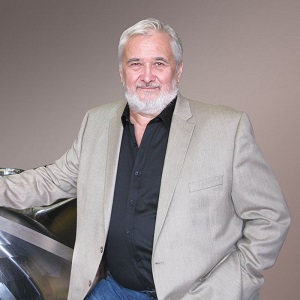Established in 1985, Dominis Engineering specializes in designing, machining and measurement of marine propellers, water jet impellers, and hydro turbine runners. The company has developed state-of-the-art technology for CNC milling of sculptured surfaces to final form and finish which eliminates the need for hand finishing from the manufacturing process.
The Gloucester, Ont.-based company is considered a leader in the manufacturing of propellers and water jet impellers. Bodo is the president of a thriving and innovative small Canadian company, but there are moments when he feels more like a “lion tamer.”
Q How did you start out in this industry and how has it brought you to where you are today?
I left my job as application programmer at the Airborne Radar Laboratory of the Communications Research Center in 1986 when my father retired from the Ship Research Laboratory of the National Research Council and we started Dominis Engineering. For the first three years, we worked out of a 400 sq.ft. office in Vanier.

We purchased DEC VAX computers and dived into developing our ideas and testing of new algorithms for CNC milling of propellers. In 1989, we bought our first 5-axis CNC milling machine.
In our current 9,000 sq ft facility we now have: three large 5-axis CNC milling machines, vertical boring mill, two balancing machines, and a high-resolution laser scanner for inspection of propellers. We are planning on expanding.
We are planning on expanding.
Q What is your role in your organization today?
I am officially the president but from time to time I assume the role of a lion tamer. I also lead Dominis R&D efforts.
Q What was your most challenging moment?
Getting the contract in 2003 for the supply of spare propeller blades for the Canadian Patrol Frigates. We were competing against all the big propeller manufacturers in the world. Until then we only made ship model propellers, hydro turbine blades, small CP propeller blades for the US Coast Guard and propellers for Canadian icebreaker “Griffon”. It took me two months to prepare and submit our bid and it took about two months for the Government to evaluate all the proposals and award the contract. If we had not been awarded this big contract, we would not be where we are today.
Q What was your a-ha moment?
It happened while I was at a drafting table and was working on a design of fixtures and tools with the objective to achieve the best possible precision of the propeller blade surface. I realized that the only way to get the best results is to CNC machine all surfaces to final form and finish completely eliminating hand grinding from the manufacturing process.
Q What is the one thing that has you most fired up today?
…The biggest challenge is the amount of effort that a small high-tech company has to expend to be noticed by the large players in the defence sector. Canadian small enterprises lack the kind of protection that U.S. small companies benefit from, such as a request for proposals which are “set aside” for small businesses or purchases which are subject to restrictions under the Buy America Act.
Q What is the best advice you received?
It came from my father. He said: Deliver superior quality and value to your customer and charge a fair price.
Q What is a habit that contributes to your success?
Striving to always be better. Good enough is not good enough.
Q What is your parting piece of advice?
Do not accept compromises that may compromise the quality of your work. Always strive for perfection. Churchill says it so well: “To improve is to change; to be perfect is to change often.”
Q What people or organizations do you believe best embody the innovation mindset?
I firmly believe that both Thordon Bearings and Gastops are top-notch small Canadian companies that have been very innovative and very successful.
Questions about Dominis
Q How is your organization changing the game within your industry sector?
Dominis is conducting research to demonstrate that machining to final form and finish reduces cavitation induced noise and increases propeller efficiency.
Q What are some of the biggest impediments to innovation in our industry sector?
In Canada, spending on R&D as a percentage of GNP has been on a steady decline for more than a decade. Canada does not rank anymore in the top 10 R&D spenders in the world. We have been surpassed by Russia, India, and Brazil who have outspent Canada relative to the size of their economies…We spend more to acquire technologies developed by other countries than the rest of the world buys from us, i.e. we have an intellectual property deficit.
Q How has innovation become engrained in your organization’s culture and how is it being optimized?
R&D is the key to success for Dominis. We developed our own software, our own tooling, and our own processes to machine these large complex parts. This gives us the edge over other companies.
Q What technologies, business models, and trends will drive the biggest changes in your industry over the next two years?
Unattended “lights out” CNC machining of large components such as propellers and water jet impellers is the current trend and 3D printing.

